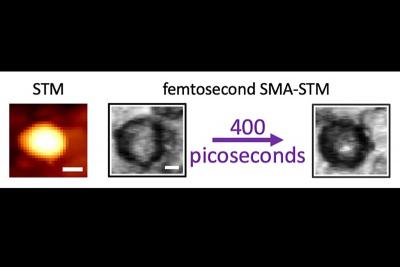A new study by researchers from the University of Illinois Urbana-Champaign and the University of Delaware, Baltimore County, in a collaborative project through the Beckman Institute for Advanced Science and Technology at Illinois, used ultrafast nanometric imaging and found good and bad emitters among populations of carbon dots. This observation suggests that by selecting only super-emitters, carbon nanodots can be purified to replace toxic metal quantum dots in many applications, according to the researchers.

âComing into this study, we did not know if all carbon dots are only mediocre emitters or if some were perfect and others were bad,â said Illinois chemistry professor Martin Gruebele, who led the study. âWe knew that if we could show that there are good ones and bad ones, maybe we could eventually find a way to pick the perfect ones out of the mix.â
âUsing our previously developed single-molecule absorption scanning tunneling microscope, we could only image excited states with no time resolution,â Gruebele said. âIn this study, however, we can now record quantum dots while in their excited state by combining true nanometer space resolution with femtosecond time resolution.â
The team found that the energy excitation takes one of two paths: either emit light or expel the energy as heat before getting a chance to fluorescence. âWe found that in bulk populations, approximately 20% of a given population of carbon nanodots are perfect emitters, while about 80% have a very short light emission state before expelling heat,â Gruebele said. âBeing able to see that there are different populations tells us that it may be possible to purify carbon dot populations by selecting only the perfect light emitters.â
The ability to pick out the perfect dots could make the concept of efficient carbon-based dots a reality, Gruebele said. âMetal quantum dots are often used to monitor the health of living cells, which is far from ideal, and having a nontoxic, economical option would be a significant advancement.â
The new imaging technology also allows the researchers to observe why some dots never light up, hinting that there is hope that researchers can someday synthesize perfect light-emitting carbon dots.
âWe now know that we have an instrument that identifies the problem,â Gruebele said. âWhether we use it to purify groups of carbon dots or to help synthesize perfect light-emitting carbon dots is now just a question of where we want to head next.â